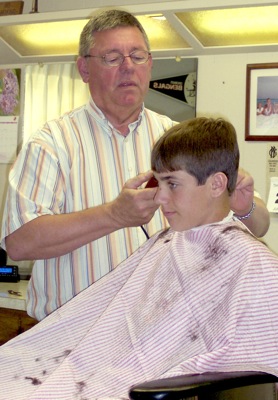Wednesday, June 8th, 2011
Officials study flood causes
By Amy Kronenberger
WAPAKONETA - A flash flood that tore through the area in late February has left officials working to find out why it occurred and how to prevent it in the future.
Auglaize Emergency Management Agency Director Troy Anderson met with county commissioners and New Bremen and St. Marys officials Tuesday to discuss his preliminary findings.
Anderson said he began his inspection at the Miami-Erie Canal in New Bremen because that is where the flooding started. He found many areas in the canal, from New Bremen to St. Marys, with log debris or garbage jams.
"There was an area where a resident just threw garbage right into the canal," he said. "In another area, there was an eight-foot stretch of logs, corn fodder and round bails that looked like they were rolled right in."
Anderson wrote in his report that these jams, along with sandbars caused by bank washouts and the narrowing of the original width of the canal, "further exacerbated or caused flooding."
New Bremen flooded mostly because of the amount of rain and snow melt in a short amount of time on frozen and saturated ground, he said. However, the blockages along the canal caused additional water to back up into New Bremen.
A contributing issue to flooding in St. Marys was the lock and spillway downtown. Anderson said when crews rebuilt the lock, they matched it to its original size, but they scaled down the spillway. Because of this, more water is pouring into the spillway than it can handle.
The canal blockages also forced more water into the eastern branch of the St. Marys River, where the canal feeds into it. This created a bottleneck effect near K.C. Geiger Park, he said.
To keep Grand Lake water from rising too high, the Ohio Department of Natural Resources (ODNR) opened the feeder gates, which dumped even more water into the St. Marys River.
The level of the St. Marys River was rising because of the rain, but it was holding its own, Anderson said. Then the combination of the canal problems and the opening of the feeder gates produced a "double whammy" for St. Marys.
From 2002 to 2010, Auglaize County received an average of 1.17 inches of rain in the month of February, according to Anderson's findings. This year the county received 6.1 inches in February, along with 19.5 inches of snow. Nearly 7.5 inches of snow fell three days before the flood, leaving 4 inches of snow packed down and a frozen, saturated ground when the rain hit.
St. Marys Mayor Greg Freewalt suggested officials look into how much it would cost to use a backhoe to clear out the canal.
"It isn't a cure-all, but if clearing the canal will help then that should be our first step," he said.
Anderson said ODNR would have to be involved. He plans to set up a meeting with state and local officials.
New Bremen Mayor Jeff Pape volunteered to take pictures of the different jams along the canal and put together a presentation for the meeting. Freewalt recommended involving all the mayors in the county and county engineer Doug Reinhart to get everyone working together.
Anderson will try to set up the meeting for next week.



